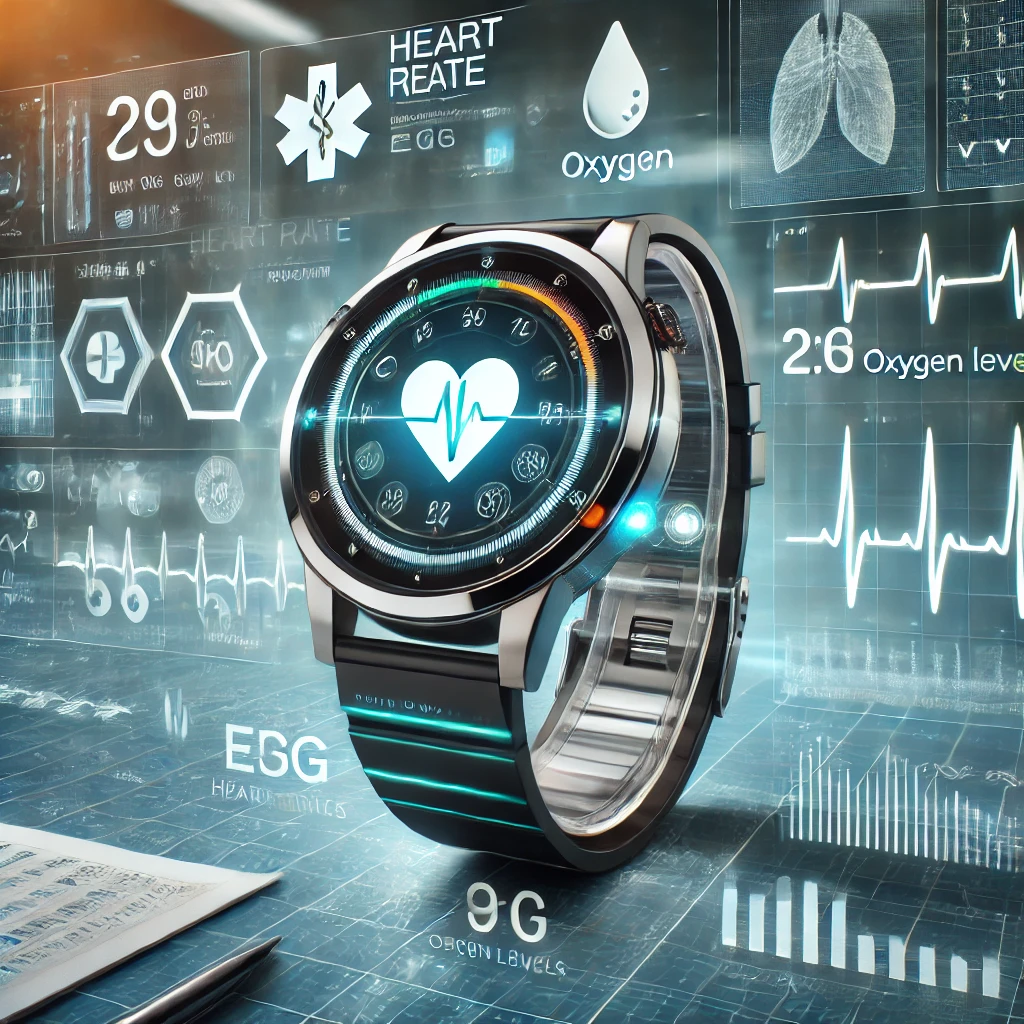
Exploring the Future of Wearable Tech in Healthcare

Exploring the Future of Wearable Tech in Healthcare.
Wearable technology is revolutionizing the healthcare industry, bringing personalized medicine and preventive care closer to reality. From fitness trackers to advanced medical devices, wearables have transcended their initial role of tracking steps to becoming vital tools in health monitoring and management. In this article, we explore how wearable technology is shaping the future of healthcare, focusing on innovations, applications, and challenges.
The Rise of Wearable Technology in Healthcare
Wearable technology has grown exponentially over the past decade. According to market research, the global wearable medical devices market is expected to surpass $30 billion by 2027, driven by advancements in artificial intelligence (AI), the Internet of Things (IoT), and miniaturization of sensors.
Key examples of healthcare wearables include:
1. Fitness Trackers – Devices like Fitbit and Garmin monitor physical activity, heart rate, and sleep patterns.
2. Smartwatches – Apple Watch and Samsung Galaxy Watch now feature electrocardiograms (ECGs) and blood oxygen monitoring.
READ ALSO: 5 Tips for Optimizing Your Smartphone’s Battery Life.
3. Medical Wearables – Devices such as continuous glucose monitors (CGMs) and portable ECG monitors cater to specific health conditions.
4. Remote Patient Monitoring Devices – These track patients’ vital signs and transmit data to healthcare providers in real-time.
Top Applications of Wearable Tech in Healthcare
1. Chronic Disease Management Wearables are empowering patients with chronic conditions like diabetes and hypertension. Continuous glucose monitors, for example, enable diabetes patients to track their blood sugar levels without the need for constant finger-pricking.
2. Preventive Healthcare Early detection of health anomalies is a significant benefit of wearable tech. Devices that monitor heart rate variability can detect arrhythmias, potentially preventing life-threatening cardiac events.
3. Fitness and Mental Wellness Wearables encourage users to lead healthier lifestyles. Features like guided breathing exercises and sleep analysis promote mental well-being alongside physical fitness.
4. Elderly Care Wearable devices equipped with fall detection and emergency alert systems are proving indispensable for elderly individuals who live alone.
5. Remote Patient Monitoring In a post-pandemic world, remote monitoring has gained prominence. Devices that send real-time health data to doctors reduce the need for hospital visits and improve patient outcomes.
Technological Innovations Driving the Future
1. Artificial Intelligence and Machine Learning AI is enabling wearables to provide predictive analytics, offering personalized health insights and early warnings for potential health risks.
2. IoT Integration Wearables connected to IoT ecosystems can provide a holistic view of a patient’s health by integrating data from multiple devices.
3. Advanced Sensors Breakthroughs in sensor technology allow for non-invasive monitoring of biomarkers like glucose, hydration levels, and even stress.
4. 5G Connectivity High-speed 5G networks facilitate seamless data transmission between wearables and healthcare systems, ensuring timely interventions.
5. Nanotechnology The miniaturization of devices through nanotechnology is opening doors for implantable wearables and smart tattoos that offer continuous health monitoring.
Challenges in Implementing Wearable Tech in Healthcare
While the potential is vast, wearable technology faces several challenges:
Data Privacy and Security: Protecting sensitive health data from breaches is a critical concern.
Accuracy and Reliability: Ensuring that wearables provide precise and consistent data is crucial for their effectiveness.
Cost and Accessibility: High costs can limit accessibility for lower-income groups, creating disparities in healthcare.
Integration with Healthcare Systems: Interoperability with existing electronic health records (EHRs) is often a hurdle.
The Role of Wearable Tech in Personalized Medicine
Personalized medicine tailors healthcare to an individual’s unique genetic makeup and lifestyle. Wearables play a vital role by collecting real-time data that can be used for personalized treatment plans. For instance:
Genetic Wearables: Devices analyzing DNA can predict health risks and suggest preventive measures.
Customized Fitness Plans: AI-driven wearables can provide exercise recommendations based on a user’s physical condition and goals.
The Future Outlook
The future of wearable technology in healthcare is incredibly promising:
1. Improved Patient Engagement: Wearables encourage users to take an active role in managing their health.
2. Advanced Diagnostics: Wearables capable of detecting biomarkers for diseases like cancer are under development.
3. Global Health Impact: In low-resource settings, wearable tech can bridge gaps in healthcare delivery.
Conclusion
Wearable technology is set to transform healthcare by making it more proactive, personalized, and accessible. However, for this transformation to be fully realized, challenges like data security, affordability, and system integration need to be addressed. As innovation continues, wearable tech will undoubtedly play a pivotal role in the future of global health.





